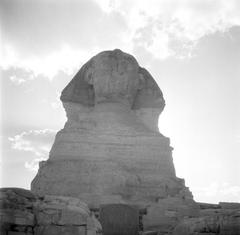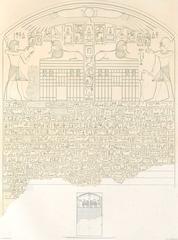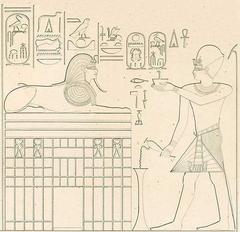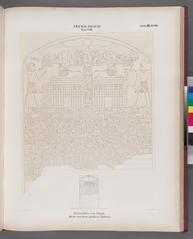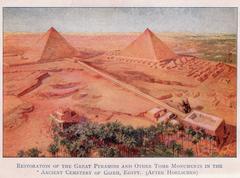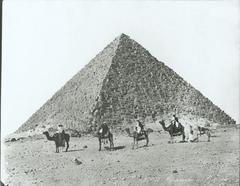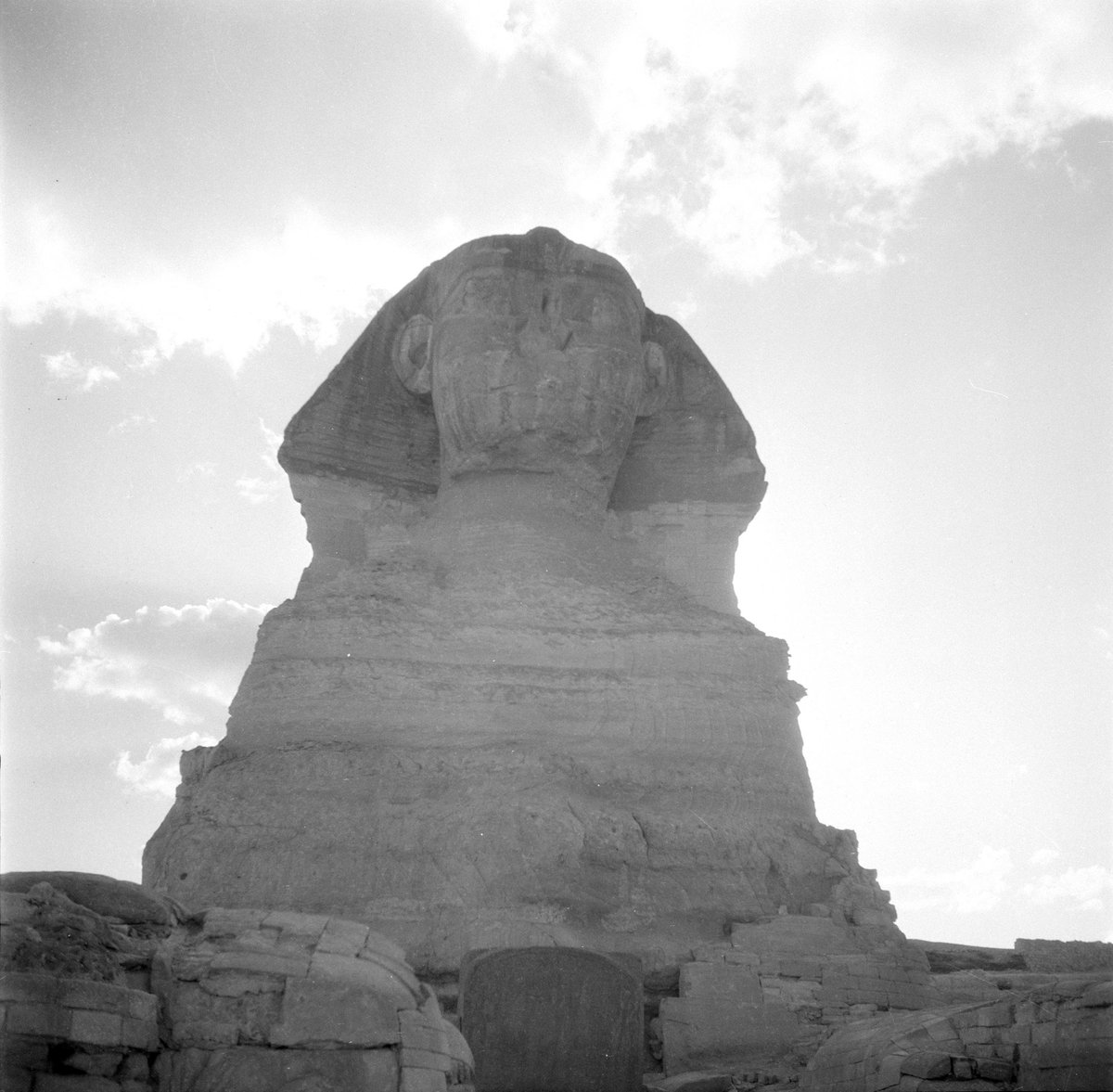
Dream Stele Visiting Hours, Tickets, and Guide to Giza Historical Sites
Date: 14/06/2025
Introduction
The Dream Stele, majestically positioned between the paws of the Great Sphinx on the Giza Plateau, stands as a profound testament to ancient Egyptian history, royal ideology, and religious practice. Erected in the 18th Dynasty by Pharaoh Thutmose IV around 1401 BCE, this pink granite monument not only commemorates a pivotal moment in Egyptian mythology but also serves as a vital link between past and present. Visitors to the site can expect to immerse themselves in a landscape rich with symbolism, artistry, and legacy.
This guide provides a detailed overview of the Dream Stele’s historical and cultural context, practical information on visiting hours and ticketing, accessibility advice, and recommendations for nearby attractions. Whether you’re a history enthusiast, a curious traveler, or planning your first journey to Giza, this resource will help you navigate and appreciate one of Egypt’s most iconic monuments.
For authoritative background and updates, refer to the British Museum, The Met, and the Egyptian Ministry of Tourism.
Table of Contents
- Introduction
- Origins and Construction of the Dream Stele
- The Dream Narrative: Thutmose IV’s Divine Encounter
- Political and Religious Significance
- Artistic Features and Inscriptions
- Archaeological Discovery and Preservation
- Visiting the Dream Stele: Hours, Tickets, and Accessibility
- Nearby Attractions and Travel Tips
- Interactive Media and Resources
- Frequently Asked Questions (FAQ)
- Conclusion
- References
Origins and Construction of the Dream Stele
Commissioned by Thutmose IV during Egypt’s 18th Dynasty, the Dream Stele is a monumental pink granite slab standing approximately 3.6 meters tall. It was erected between the paws of the Great Sphinx and likely repurposed from a door lintel originally belonging to Khafre’s mortuary temple, as evidenced by architectural features matching those at the temple (PanAfroCore). The upper register features Thutmose IV making offerings to the Sphinx, depicted on a pedestal, and this detail has inspired speculation about possible chambers beneath the monument.
The Dream Narrative: Thutmose IV’s Divine Encounter
The Dream Stele’s hieroglyphic inscription recounts a formative episode in Thutmose IV’s life. As a prince, he fell asleep in the shadow of the Sphinx and dreamed that the Sphinx, personified as the god Horemakhet-Kheperi-Ra-Atum, promised him kingship if he would clear away the sand engulfing the monument. This act, later fulfilled by Thutmose IV, is immortalized on the stele and was used to legitimize his ascent to the throne (Smithsonian Magazine).
Political and Religious Significance
Thutmose IV was not the eldest son of Amenhotep II, and his succession may have faced challenges. The stele’s narrative provided divine endorsement, reinforcing his right to rule. The Sphinx itself, closely associated with the sun god Ra, was a potent symbol of royal power and religious authority, and the Dream Stele solidified the Giza Plateau’s status as a sacred pilgrimage destination during the New Kingdom (Encyclopedia Britannica; Tour Egypt).
Artistic Features and Inscriptions
The Dream Stele is renowned for its exquisite craftsmanship. The upper lunette shows Thutmose IV in an act of worship, while vertical columns of hieroglyphs narrate his divine dream and subsequent deeds. The stele’s artistry exemplifies New Kingdom calligraphy and blends political messaging with religious devotion (Digital Giza).
Archaeological Discovery and Preservation
Rediscovered in the 19th century, the Dream Stele had been partially buried by sand, reflecting the narrative inscribed upon it. Modern conservation efforts are ongoing to address weathering, pollution, and visitor impact. Measures include regular cleaning, structural stabilization, and barriers to protect the monument’s integrity (UNESCO World Heritage Centre).
Visiting the Dream Stele: Hours, Tickets, and Accessibility
Location
The Dream Stele is located on the Giza Plateau, directly between the paws of the Great Sphinx, approximately 20 kilometers from downtown Cairo.
Visiting Hours
- Standard Opening Hours: Daily from 8:00 AM to 5:00 PM, though hours may vary slightly by season.
- Best Times to Visit: Early morning or late afternoon to avoid crowds and midday heat (Travel with a Pen).
Ticket Information
- General Admission: Approximately 200–240 EGP for foreign visitors (students receive a 50% discount with valid ID). This ticket grants access to the Sphinx, Dream Stele viewing area, and the plateau’s major sites.
- VIP Access: For close-up access between the Sphinx’s paws and direct viewing of the Dream Stele, a VIP tour is required (typically $100–$200 USD per person), which includes guided interpretation and sometimes hotel transfers (VIP Egypt Tours; Explore Egypt Tours).
- Tickets: Purchase at the main entrance or online via the Egyptian Ministry of Tourism.
Getting There
- Transport: Accessible by taxi, ride-hailing apps, or organized tours from Cairo. The main entrance is near the Mena House Hotel.
- Site Navigation: Follow signs to the Sphinx enclosure; the Dream Stele is behind a protective barrier between the Sphinx’s forepaws.
Accessibility
- Physical Access: The terrain is sandy and uneven; comfortable shoes are advised. The main viewing platform is accessible with assistance, but full wheelchair accessibility is limited.
- Guided Tours: Licensed guides are available at the entrance or through advance booking, enhancing your visit with historical context and logistical support.
Safety and Security
Security is robust, with checkpoints at entrances. Beware of persistent unofficial vendors; a firm but polite refusal is effective. Hiring a guide can help minimize such interactions.
Practical Tips for Visiting
- Arrive Early: Morning visits offer the best climate and fewer crowds.
- Dress Appropriately: Lightweight, modest clothing, closed-toe shoes, hats, and sunscreen are recommended.
- Stay Hydrated: Bring bottled water, especially in summer months.
- Photography: Allowed from designated areas; tripods require a small fee. Drones are prohibited.
- Respect Preservation Efforts: Do not cross barriers or touch the Stele/Sphinx unless permitted on VIP tours.
Nearby Attractions
- Great Sphinx and Sphinx Temple
- Pyramids of Khufu, Khafre, and Menkaure
- Solar Boat Museum
- Grand Egyptian Museum (upcoming)
- Pharaonic Village (family-friendly)
- For more, see Egipto Exclusivo.
Facilities and Amenities
- Dining: The 9 Pyramids Lounge offers refreshments and meals with panoramic views.
- Restrooms: Available at main entrance and lounge.
- Shops: Kiosks sell bottled water and snacks.
Interactive Media and Resources
- Virtual tours and high-resolution images of the Dream Stele are available online.
- Download the Audiala app for real-time updates, self-guided tours, and insider tips.
Frequently Asked Questions (FAQ)
Q: What are the Dream Stele visiting hours?
A: The Giza Plateau is open daily from 8:00 AM to 5:00 PM. Verify before your visit for seasonal changes.
Q: Is there an entry fee?
A: Yes. General admission is around 200–240 EGP; VIP tours are extra.
Q: Can I get close to the Dream Stele?
A: Standard entry allows distant viewing; VIP tours offer close access.
Q: Are guides required?
A: Not required but highly recommended for historical insights and smoother navigation.
Q: Is the site accessible for those with mobility challenges?
A: Some barriers exist due to uneven terrain; the main viewing area is reachable with assistance.
Q: Is photography allowed?
A: Yes, from designated areas. Tripods incur a small fee; drones are not permitted.
Conclusion
A visit to the Dream Stele immerses you in the heart of Egypt’s ancient world, where myth, artistry, and kingship converge. By planning ahead—considering visiting hours, ticketing options, and accessibility—you can ensure a rewarding experience at Giza’s legendary landmark. Enrich your exploration with guided tours, interactive resources, and responsible tourism practices to preserve this heritage for generations to come.
Download the Audiala app for up-to-date travel information, exclusive tips, and interactive guides to Egypt’s wonders.
References
- British Museum
- The Met
- Smithsonian Magazine
- Encyclopedia Britannica
- Tour Egypt
- Digital Giza
- UNESCO World Heritage Centre
- Egyptian Ministry of Tourism
- PanAfroCore
- Travel with a Pen
- VIP Egypt Tours
- Explore Egypt Tours
- Ancient Origins
- Ancient Egypt Online
- Wikipedia
- Egypt Uncovered
- Egipto Exclusivo
